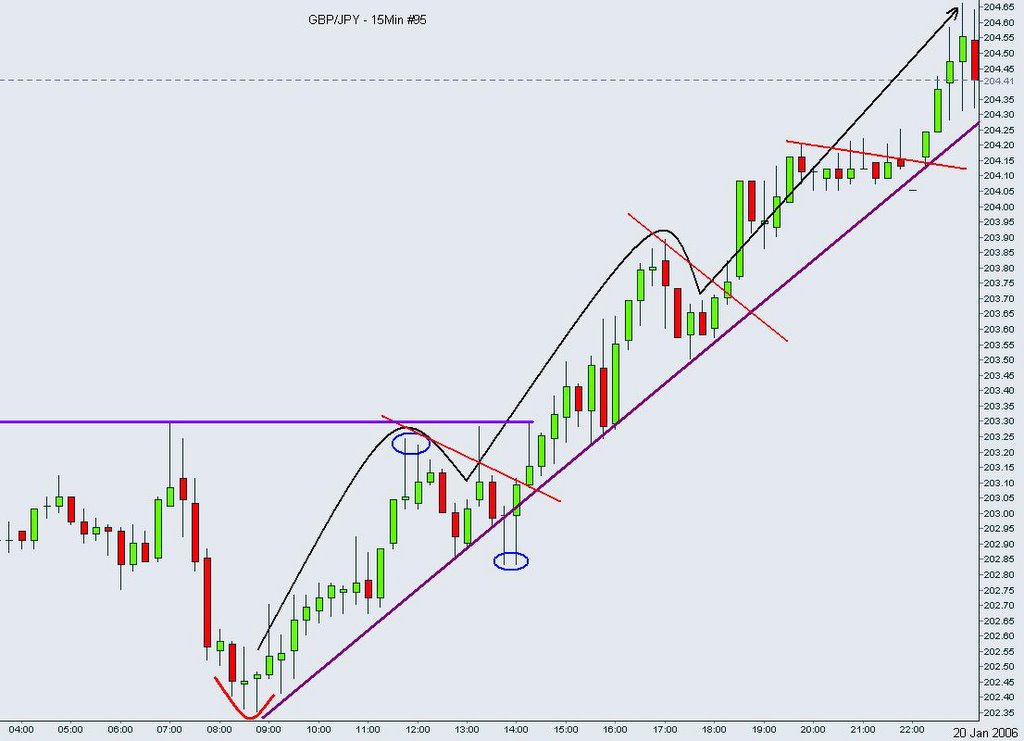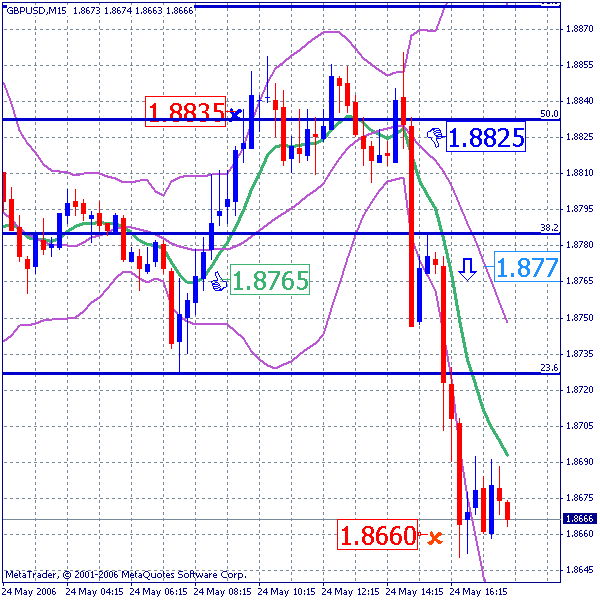Range trading is a very popular strategy for forex trading. Forex traders use it to profit from currency price movement within a defined range. Unlike trend trading, traders capitalize on identifying areas of support and resistance. The goal is to execute trades within these boundaries for quick profitability.
The forex market price movements, often exhibit periods of consolidation, where the price fluctuates within a relatively narrow range. Range traders seek to exploit these range-bound conditions by buying at support levels and selling at resistance levels, aiming to profit from the price oscillations within this range.
Understanding Range Trading
The success of range trading hinges on the ability to accurately identify support and resistance levels. Support is the price level at which buying interest is sufficiently strong to prevent the price from declining further, while resistance is the price level at which selling pressure prevents the price from rising further.
Traders use various technical indicators and chart patterns to identify potential ranges and confirm the validity of support and resistance levels. Once a range is established, traders can enter long positions near support and short positions near resistance, with the expectation that the price will continue to oscillate within the range.
Strategies for Range Trading
Several strategies can be employed for range trading in the forex market, each with its own set of rules and guidelines. One popular strategy is the Bollinger Bands strategy, which involves using the width of the Bollinger Bands to identify periods of low volatility and potential range-bound conditions.
Another commonly used strategy is the moving averages strategy, which involves using moving averages to identify the direction of the trend and trade within the boundaries of the range. Pivot points are also commonly used by range traders to identify key support and resistance levels.
Technical Indicators for Range Trading
Traders often rely on technical indicators to confirm their range trading setups and make informed trading decisions. The Relative Strength Index (RSI) is one. Others include Stochastic Oscillators, Fractals, and Moving Average Convergence Divergence (MACD). These are among the most commonly used indicators for range trading.
Indicators help traders gauge the strength of price momentum. They also identify overbought and oversold conditions and confirm potential trend reversals within the range. When you combine multiple indicators, you can increase the probability of successful range trading.
Risk Management in Range Trading
As with any trading strategy, risk management is crucial in range trading to protect capital and minimize losses. Traders should always use stop-loss orders to limit potential losses and take-profit orders to lock in profits.
Position sizing is also important in range trading, as traders should only risk a small percentage of their trading capital on each trade. By maintaining a favorable risk-to-reward ratio, traders can ensure that their winning trades outweigh their losing trades over the long term.
Psychology of Range Trading
The psychological aspect of trading is often overlooked but plays a significant role in a trader’s success. Range trading requires patience and discipline, as traders must wait for favorable trading opportunities to arise and avoid the temptation to chase the market.
Fear and greed can cloud a trader’s judgment and lead to impulsive decision-making. Successful range traders remain calm and focused, sticking to their trading plan and avoiding emotional reactions to market fluctuations.
Real-Life Examples of Range Trading
To better understand range trading in practice, let’s consider a real-life example. Suppose a currency pair has been trading within a range of 1.2000 to 1.2200 for several weeks, with support at 1.2000 and resistance at 1.2200.
A range trader may enter a long position near the support level of 1.2000, expecting the price to bounce off support and move higher within the range. Conversely, the trader may enter a short position near the resistance level of 1.2200, anticipating a reversal and a move lower within the range.
Advantages and Disadvantages of Range Trading
Range trading offers several advantages, including the ability to profit from range-bound market conditions, reduced exposure to market volatility, and clear entry and exit levels. However, range trading also has its limitations, such as the potential for false breakouts and whipsaw movements.
Traders must carefully assess the current market environment and adapt their trading strategies accordingly to maximize the benefits of range trading while minimizing its drawbacks.
Advantages of Range Trading
- Defined Risk: Range trading thrives in markets with predictable price movements. This allows you to identify your support and resistance levels. You can establish clear entry and exit points, which help limit your potential losses.
- Regular Profit Opportunities: The cyclical nature of range-bound markets presents frequent buying and selling opportunities within the defined trading range.
- Reduced Market Volatility: Range trading strategies are less susceptible to sharp price swings experienced in trending markets, offering a more measured approach for risk-averse traders.
- Suitable for All Market Conditions: Even in periods of consolidation or sideways movement, range trading allows traders to capitalize on price fluctuations within the established trading channel.
- Requires Less Monitoring: Once the range is identified and entry/exit points are set, range trading requires less active monitoring compared to strategies that chase trends.
- Adaptable to Different Timeframes: Range trading concepts can be applied across various timeframes, from day trading to swing trading, allowing traders to adjust their strategy based on risk tolerance and capital.
- Teachable Strategy: The core principles of range trading are relatively straightforward, making it an accessible strategy for new traders to learn and implement.
Disadvantages of Range Trading
- Limited Profit Potential: Compared to trend-following strategies, range trading generally offers smaller profits as gains are capped by the defined trading range.
- False Breakouts: Price movements that appear to break out of the range can be misleading, leading to unnecessary trades and potential losses.
- Market Breakouts: Range-bound markets can unexpectedly break out, causing significant losses if the trader is not prepared to adjust their position.
- Requires Discipline: The success of range trading hinges on strict adherence to entry and exit points to avoid emotional trading decisions.
- Inactivity During Trends: Range trading might become inactive during strong trending markets, potentially leading to missed opportunities for larger profits.
Tips for Successful Range Trading
Successful range trading requires discipline and patience to exploit price movements within a defined trading range. Mastering this strategy involves identifying strong support and resistance levels.
Confirmation is vital. Use stop-loss orders to manage risk and avoid emotional decisions during volatile market conditions. Remember, consistency and calculated entries are your allies in ranging markets. Here are some currency markets’ proven tips for successful range trading:
- Define the Range: Identify a well-defined trading range using technical indicators like moving averages or support/resistance zones. Focus on price action, not chasing breakouts that may be false signals.
- Wait for Confirmation: Don’t rush in! Wait for confirmation like pin bars or price rejections at the range’s boundaries before entering a trade. This reduces your risk of false breakouts.
- Manage Risk Wisely: Use stop-loss orders placed strategically to limit potential losses if the price moves against you. This protects your trading capital and fosters disciplined trading.
- Size Matters: Employ proper position sizing. Don’t risk a significant portion of your account on a single trade. Start small and scale up gradually as you gain confidence and experience.
- Stay Objective: Stay emotionally detached from the market. Avoid the temptation to overtrade or hold onto losing positions hoping for a reversal. Stick to your trading plan and exit trades based on pre-defined parameters.
To excel in your range trading, you should focus on continuous learning and improvement. Spend some time studying historical price data, analyzing market trends, and refining your trading strategies. This can increase your chances of success in range-bound markets.
However, patience and discipline are also essential qualities for successful range traders. Wait for high-probability trading setups and adhere to your trading plan. You can avoid impulsive decisions and maintain consistency in your trading approach.
Conclusion
Range trading is a valuable strategy for forex traders seeking to capitalize on range-bound market conditions. By accurately identifying support and resistance levels, employing effective trading strategies, and managing risk appropriately, traders can profit from the price oscillations within the range.
With patience, discipline, and continuous learning, traders can master the art of range trading and achieve consistent profitability in the forex market.
Frequently Asked Questions, FAQs
What is range trading in forex?
Range trading in forex involves buying at support levels and selling at resistance levels within a defined price range.
What are the common indicators used in range trading?
Common indicators used in range trading include Bollinger Bands, moving averages, and pivot points.
How can I identify support and resistance levels for range trading?
You identify support and resistance levels by using technical analysis tools trendlines, horizontal levels, and chart patterns.
What are the advantages of range trading?
The advantages of range trading include clear entry and exit levels, reduced exposure to market volatility, and the ability to profit from range-bound market conditions.
What are some common challenges in range trading?
Common challenges in range trading include false breakouts, whipsaw movements, and difficulty in accurately identifying range-bound markets.




